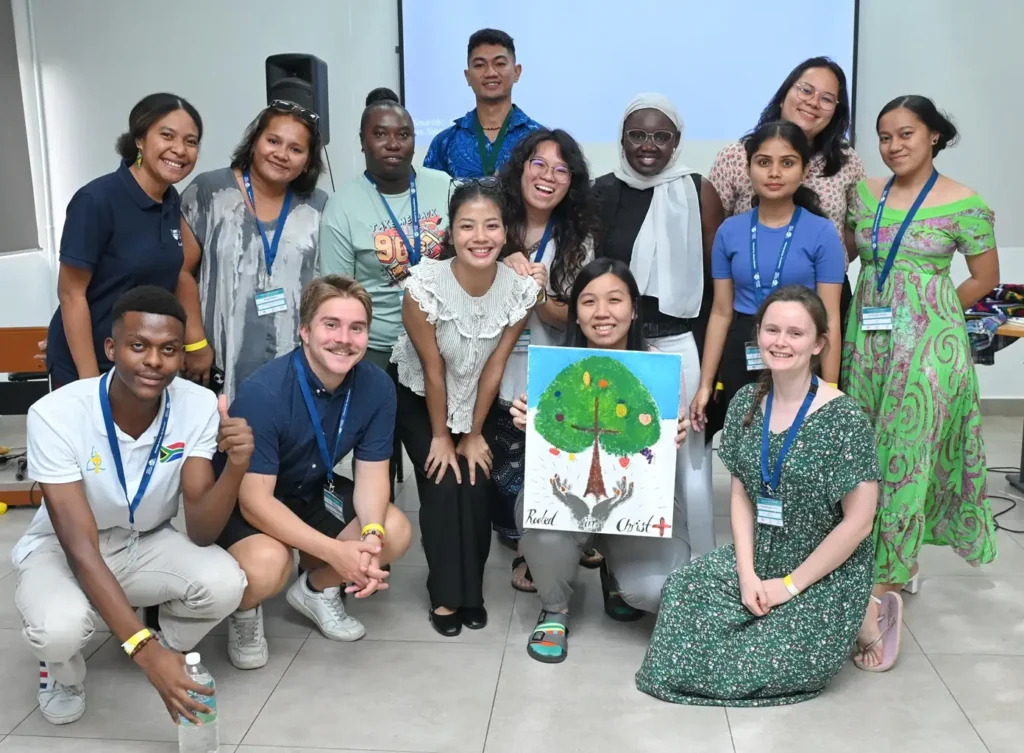The final day of the Youth and Evangelism conference opened with an inspiring worship experience led by youth representatives of the World Council of Churches (WCC). Through four prayer stations set across the seminary grounds, participants were invited into a journey of embodied prayer, combining movement with a Scottish chant that sought God’s deliverance for the oppressed, abused, and marginalised.
Exploring the Transformative Ecumenism Movement
The highlight of the day was an in-depth engagement with the Transformative Ecumenism Movement (TEM), facilitated by Samuel Munayer, a Palestinian theologian from Jerusalem. Munayer posed a series of probing questions: What distinguishes good ecumenism from bad? How does it impact local churches? And what roles can youth play in grassroots ecumenism?
From among the participants, Trevaughn Hylton, a Training in Mission representative from Jamaica, highlighted how ecumenism has enabled collaboration in his community—especially in accessible healthcare and educational initiatives for the less fortunate. Meanwhile, Zeerak Shahbaz, representing the United Reformed Church in the United Kingdom, cautioned against ecumenism’s “shadow sides,” such as superficiality and complicity.
Three subsequent presentations touched on various topics pertinent to TEM, such as the dumping of nuclear waste and rising sea levels in the Pacific, gender justice issues in Kenya including child marriage and teenage pregnancy, and the plight of Palestinians in the context of the Israel–Gaza conflict and the need for decolonisation. These are issues that demand the collective attention of the church.
Summarising the discussions, Munayer identified three hallmarks of TEM: people-based, justice-driven, and transformative.
“TEM is informed by the challenges and resources of worldwide Christianity. Its goal is to be an eventual movement of movements, connecting people and communities,” he concluded.
Reflections and closing
As the conference drew to a close, participants celebrated in song and dance, offering reflections on their three-day journey.
Laneta Sateko of the Ekalesia Kelisiano Tuvalu (EKT) expressed gratitude:
“This conference opened my eyes to the diverse cultural contexts my peers face. I was especially impacted by the Six Thinking Hats model, which challenged me to think critically and creatively in addressing problems.”
An-An (Anita) from the Presbyterian Church in Taiwan (PCT) pointed to the TEM segment as the most transformative:
“It was inspiring to be visionary about ecumenism in our local contexts and to see youth fervently committed to addressing injustices in their own communities.”
For Afika Rwayi, from the Uniting Presbyterian Church in Southern Africa (UPCSA) and a member of CWM’s Board of Directors, the event embodied ecumenism itself:
“It is about different colours coming together to paint one beautiful image of young people united in the spirit of ecumenism.”
Looking ahead
The programme was hailed as an initial step towards CWM’s goal of engaging its younger members further and encouraging them to become influential agents of change in their communities.
Rev. Dr Graham McGeoch, CWM’s Mission Secretary for Discipleship and Dialogue, affirmed this vision:
“The Youth and Evangelism conference opens the door to deeper engagement with young people. With more such programmes on the horizon, we aim to build a robust community—not only as a support network but as a powerful part of the Transformative Ecumenism Movement.”

